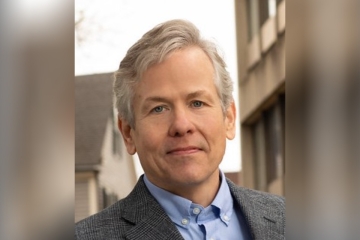Last week, Florida Governor Ron DeSantis signed legislation that allowed high schoolers to use the Classic Learning Test (CLT)—a classical alternative to the SAT and ACT—to qualify for the state’s Bright Futures scholarship. Already accepted at over 200 colleges, this legislation is the CLT’s biggest boost yet. It signals the exam’s ability to become a formidable competitor in the standardized testing space.
In a recent piece for the Wall Street Journal, Jeremy Wayne Tate, the CLT’s co-founder and president, and Cornel West write, “The richest ideas of what it means to be human are those that have stood the test of time.” Tate sees the assessment as a means to incorporate even more of the “virtues of the classics” in our school system. I had a chance to sit down and discuss classical education, the CLT, and more with him.
Sometimes it’s easiest to define by comparison. So rather than begin with “what is the CLT?” I want to ask instead: How does the CLT differ from the ACT or SAT?
The primary difference between the CLT and the ACT/SAT is source material. Source material meaning the content that is put on the test. The source material that is used on the ACT/SAT is primarily drawn from the modern age and includes thinkers from a more progressive perspective. In contrast, CLT source matter goes back thousands of years to Plato and Aristotle and includes the most influential thinkers that have driven the development of thought and culture.
You often suggest that tests are more than a mere evaluative tool. They teach. What exactly does the CLT teach that the SAT or ACT don’t?
Yes, what is put in front of students on the most important test of their academic careers carries tremendous weight. It conveys to students what is and isn’t important. The greatest thinkers in history have been deeply concerned with questions of human existence and history: What is a good life? What is virtue? How does how I live affect how happy I am? Philosophers and theologians have written on these questions for millennia. However, the SAT/ACT neglect the great philosophical and theological traditions, which in turn leads to further neglect in the classroom. Imagine if every teacher/parent/school district knew they were likely to encounter Aristotle on the most important test? What would the impact be for what is taught in the classroom?
Can you tell readers a bit about the conception of the CLT? How did the idea come about? And if spreading a classical vision of education is your goal, why a test?
I was inspired to make a change in the standardized testing space from my time teaching and college counseling at a Catholic school. The Dominican Sisters who lead the school tried to add a philosophy course, but almost no students signed up to take it. When I questioned students on why they didn’t want to take this course, they told me, “It is not a weighted AP course and I’ll never be tested on it.” The College Board and current standardized tests had tremendous power even over private schools. If we wanted to change curriculum, we had to start at the test.
A very practical question that I’ve had through my friendship with you and the CLT more generally: How was the test made? Who wrote the thing? Who decides on the passages? How are the questions crafted?
Thanks for asking about our CLT development process. From the days when I was the only CLT employee, the test has been the heart of the company. The first test was designed and constructed by a very manual process. I was coordinating closely with the person who selected passages, and that person authored most of the questions, bringing in math expertise and editorial review as needed. For security reasons, we created brand new material for every exam. After five years of overseeing the internal development of thousands of items tied to hundreds of passages, we now draw on the strongest questions to create assessments of perfectly balanced difficulty.
Moving onto the inevitable politics of this all, Ron DeSantis recently introduced legislation to encourage the adoption of the CLT across Florida’s schools and colleges. It’s not hard to imagine a Brian Kemp and other conservative governors following suit, with Democratic governors like Gavin Newsom performatively rejecting it. What’s to keep the CLT from being the conservative test and the SAT from being the liberal test, further dividing our education system along political lines?
I think it depends on what you mean by progressive and conservative. There is no question that the CLT is conservative in the sense that it values the intellectual tradition that gave birth to America. However, many aspects of a classical education, many of what are considered the “useless arts” (poetry, theater, philosophy), have often been preserved by folks on the left. I believe that both sides of the political system have their own love/hate with the classical tradition. Conservatives tend to love that classical education values tradition and the great books of the Western canon, but as exemplified by Marco Rubio, republicans have often failed to value disciplines such as philosophy or classical literature. We make the case that the wisdom of the past should be paid forward, neither neglected by conservatives nor censored by progressives.
I want to talk about classical education more generally. In an interview with the New York Times, you defined it as teaching students to love what is good and not love what is not good. Often, classical education is only discussed as it pertains to curriculum—more Aristotle, less Diary of a Wimpy Kid. I want to know what it looks like in the classroom. What makes instruction, not just book lists or dress codes, classical?
I always say, walking into a classical school classroom and seeing the students who are being formed by this type of education is the best argument for why we need these ideas, texts, and methods in the classroom. The truth is that students are far more intelligent than we give them credit for. If a student is given a novel that was written two years ago, they know that it will be irrelevant in another two years. Whereas, when a student is given a text that has been passed down for millennia—The Iliad or The Odyssey—they know it is something to be treasured and taken seriously.
The classical classroom carries a pedagogy of wonder. Students receive more than a lecture on Nicomachean Ethics—as if it were another “informational text.” They are invited to Socratic discussions of the layers of meaning that have formed a foundation for millennia of thought about right and wrong. In a classical classroom, you are unlikely to find a plethora of secondary source curriculum or textbooks. Instead, you’ll find students reading from primary sources treated with a sense of the sacred by teachers who were themselves deeply moved by the same texts. These methods and curriculums are humanizing and dignifying, and keep students engaged in a lifetime love for learning.
What’s next for the CLT and the classical education movement more generally?
The classical education movement has reached Malcom Gladwell’s tipping point, where it is now known nationally as the leading alternative to mainstream education. When we launched seven years ago, we had to explain the concept of “classical education” to almost everyone we met. Today, most people have some connection to classical education via best-selling books, dozens of conferences, and thousands of schools and homeschool co-ops. The CLT’s aim from day one was to provide a key piece of infrastructure to support the growth of classical education. As the barriers to parental rights fall in state after state, the role of the CLT only increases in importance. We will be the test for families looking for something better for their children.








